On my last beat post for 10,000 Birds I talked about how to avoid European Starlings at your seed feeder. You can also avoid them at your suet feeder too. It’s not a one hundred percent solution, but it works to keep most starlings, grackles and crows from the feeder. Let’s watch this video of a chickadee on a suet cage feeder:
httpv://www.youtube.com/watch?v=ortlQg1Cnjc
Note how that chickadee could access that suet cage from any side and chose to hang upside down? They are clinging birds and use the technique on branches and tree trunks. They are well suited for feeding in a variety of positions. “Blackbirds” do not have the same ability.
Chickadees, woodpeckers, titmice (like the bird above) and nuthatches are considered “clinging type birds” and can easily hang upside-down to get access to food. Starlings, grackles and crows have a tougher time with that. There are suet feeders that are designed to with that in mind, called (remarkably enough) upside down suet feeders.
Here’s a Red-bellied Woodpecker on an upside down suet feeder made of recycled plastic. There’s caging on the bottom for the feeder and that’s the only place birds can gain access to the suet. These feeders can also be made of wood, but I’ve heard stories of woodpeckers pecking holes through the lid of the feeder to gain access to the suet, rather than hanging upside down. Recycled plastic is probably the better way to go–and certainly easier to clean.
Most starlings, grackles and crows cannot hang upside down, but I have seen a few give it the old college try and are somewhat successful. I would say that about 1 in a thousand figure it out.
Some of you may be thinking, “Hey, it’s spring, why bother with suet?”
That’s my favorite time to offer suet. Birds fresh from migration will sometimes come to a suet feeder, especially if there’s a cold snap and few insects available. Even warblers and tanagers will fly in for some nut flavored fat. I also keep offering non-melting suet dough well into the summer, because I enjoy watching adult woodpeckers teaching their young how to feed from it.
Now, most people are dealing with grackles on their northward migration right now. At first, seeing a few grackles can be a sign of hope that spring is indeed on the way, but then a few turn all too quickly into a a few hundred and they go through the seed faster than frat boys at a keg. There is a technique you can try, but it takes patience.
This is it, it’s called safflower seed. There is technique in offering this seed. If you have been feeding black-oil sunflower and suddenly switch to straight safflower, birds will abandon your feeders. They are creatures of habit and do not accept a drastic change in seed. You can do one of 2 things:
1. Gradually add and increase the amount of safflower in your bird feeder. At first, it might get ignored and if grackles have arrived, it will end up on the ground, but other birds like Mourning Doves, Northern Cardinals, Rose-breasted Grosbeaks, chickadees, titmice and nuthatches will eat it.
2. If you have multiple feeders, make one an all safflower feeder–something that has a tray or wide perching area for larger birds like cardinals and doves. This will be the feeder that the blackbirds will avoid and the other birds can eat in peace.
Safflower is not the favorite food of house sparrows, red-winged blackbirds and squirrels. They might eat it if they have to but it can sometimes keep those species away too.


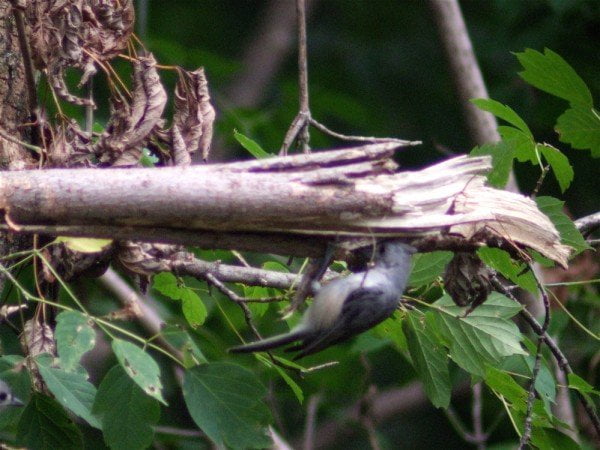
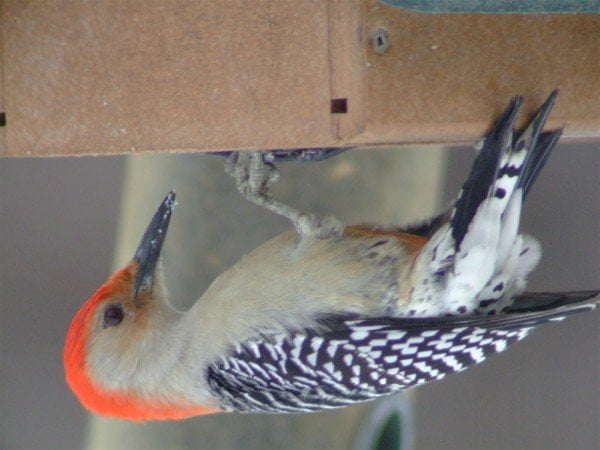
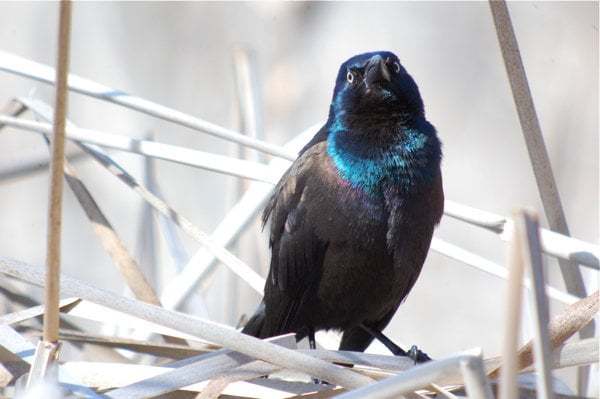
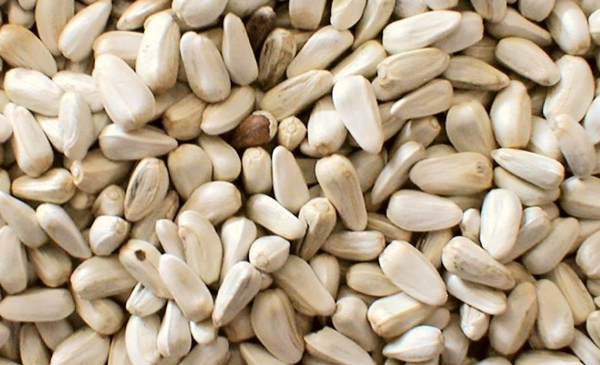
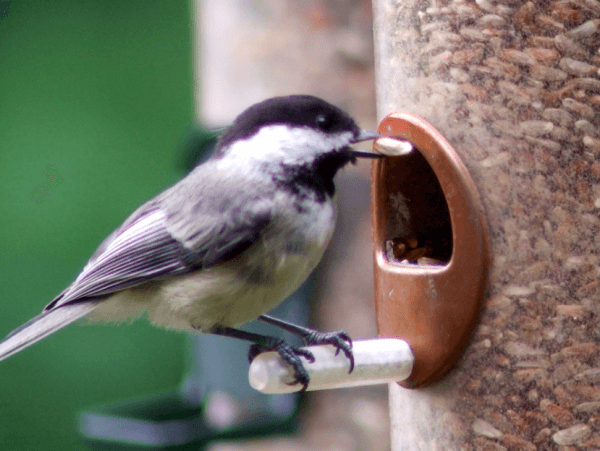










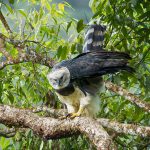
I use upside down suet feeders and only the rare starling and bluejay even attempts to use it. It’s been a cornerstone of my backyard feeding ever since my ugly initiation to how quickly grackles can take over a hopper feeder loaded with sunflower seed.
I also use the weight sensitive “squirrel proof” feeders to keep them out of my sunflower seed. When I changed to safflower years ago it was brief because the grackles were just replaced by doves on a regular hopper feeder.
I now have the best balance. I constantly re-evaluate my feeding program but I feed all the birds I want and have almost zero nuisance birds.
Thanks for the tips, Sharon! I’m just beginning to use a feeder and am surprised by how quickly the House Sparrows seem to decimate it. (Then again, maybe it’s really Grackles when I’m not around——I know they’re back in town.) I’ll try these techniques out!
Hello,
I have a brilliant red cardinal that flies into my bay window every single day,and I haven’t been able to shoo him from his daily habit.
I took down my sun catchers hopeing that would do the trick,but not
in the least. If anyone has any ideas,I’m open for suggestions.
Thank You
There is no easy answer when dealing with birds fighting their reflections in the window. You need to find a way to block his reflection. He’s established a territory in your yard and now he’s expecting to find his rival to fight every day, finds his reflection and fights it. The reflection needs to be blocked for several days (like 10 – 14) to break the habit–like covering the outside with a sheet, or rubbing soap on the outside of the window. There are several tips on FLAP.
http://www.flap.org/new/prevent.htm
I wish there was an easier way to deal with it.
I’d love to have Common Grackles and Blue Jays and American Crows at my feeders!
Another trick to avoid European Starlings is to feed suet only early in the morning, then take it in. Starlings seem to be late risers.
Perhaps urban starlings get up earlier than desert starlings. Mine often beat the woodpeckers as the first to arrive at my feeding station…or my downy and hairy woodpeckers are late sleepers.
Thank you for this! Grackles are all over our state like pigeons. Additionally, we live in suburban farm/dairy country, so blackbirds and starlings are abundant and aggressive.
I’m not a bird expert, but I’m definitely a bird lover. I found a way to get the crows, starlings, and larger blackbirds to leave the other birds alone (eg, woodpeckers, cardinals, finches, etc). I’ve noticed that anytime we get a birdseed blend with corn the crows swarm our yard like crazy. So first, I avoid putting anything with any kind of corn in the area where our woodpeckers, cardinals, finches, etc. like to gather. Second, I get a bag of “crow food” (anything with corn) and take it across the yard a good 20-30 feet away, and put it out around some bushes and trees. Those crows are smart; it only takes a day or so for them to discover their very own cafe. (If this is in any way cruel to the poor crows, please let me know!).
I put up an upside down suet feeder last month. I must have very talented grackles. They land on the squirrel baffle, jump up to the suet feeder, turn upside down, hold on and eat away.
I know your post is old, however to deter your problem for other birds there is only one solution.(I do not sell these products.) I am only a consumer. They were given to me by a relative.after I had had a cardinal almost die from hitting my dining room window as well as 3 other birds in the same week.
They are at found at ‘WindowAlert.com; I have the leaf design which looks very nice. They come in many designs. Very, very easy to put up. Mine are still on in freezing temps. They go on the OUTSIDE of the window , are clear and can be reused many times.
The birds see Ultraviolet, we see a lovely clear decal.
They are low in price and really WORK! I have not had even one bird strike window since I put these on.
(my website is not active at this time as it is being updated)
I’ve tried wrapping duct tape around part of my cage. Suet feeder. The grackles. Still manage to stick their long beaks inside the cage and eat the suet. Is there any way to prevent this?
I might try hanging my suet under a. Board. Hope this will,keep the grackles from getting to the suet. Any suggestions will be appreciated .
Upside down feeder definitely does not work. It just makes the suet last an extra day versus a standard tail prop type feeder. Grackles have no problem hanging upside down for a period of time. My conclusion is, there is nothing you can do to stop these undesirable birds that does not exclude one or more of the desirable ones.